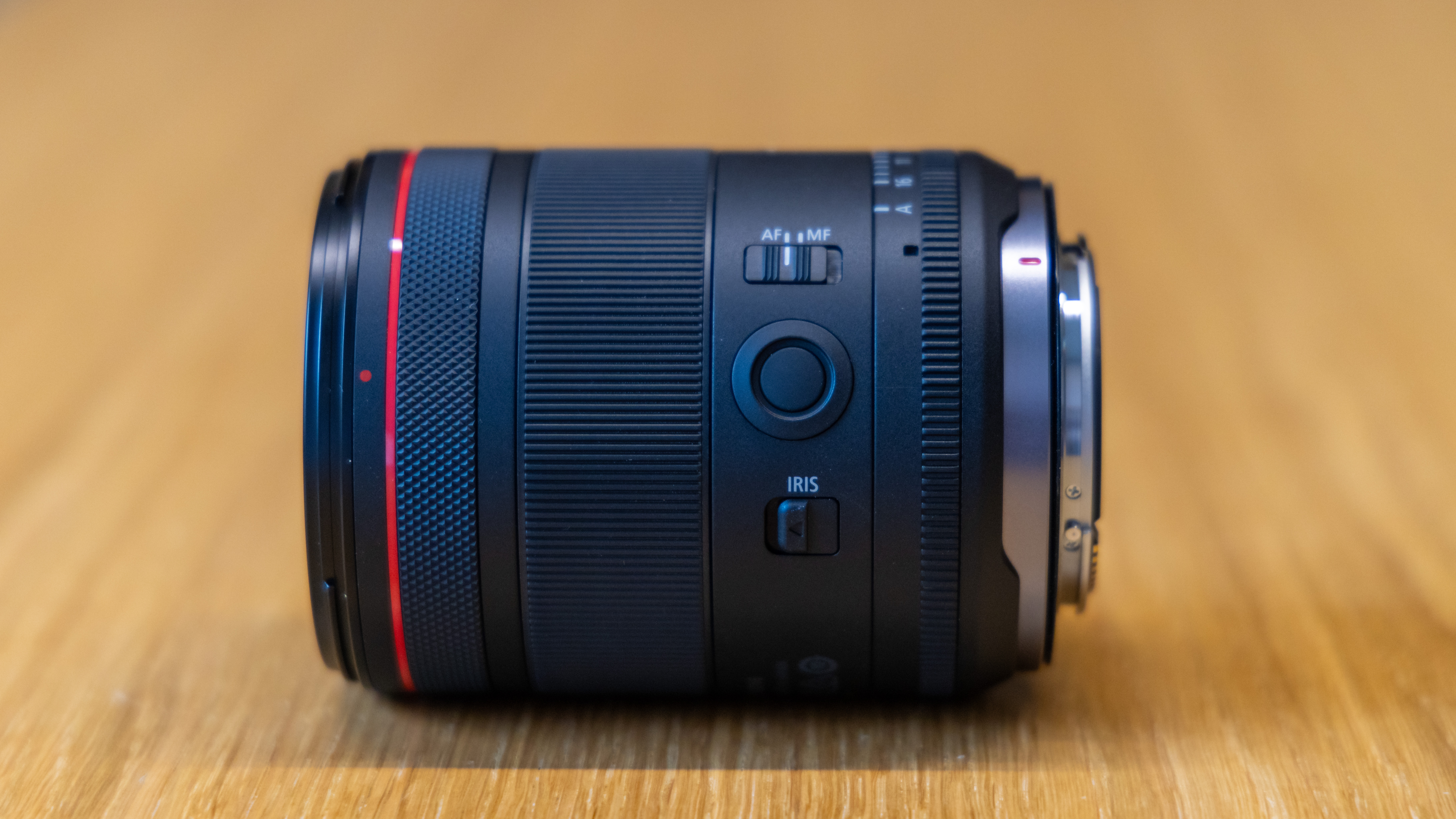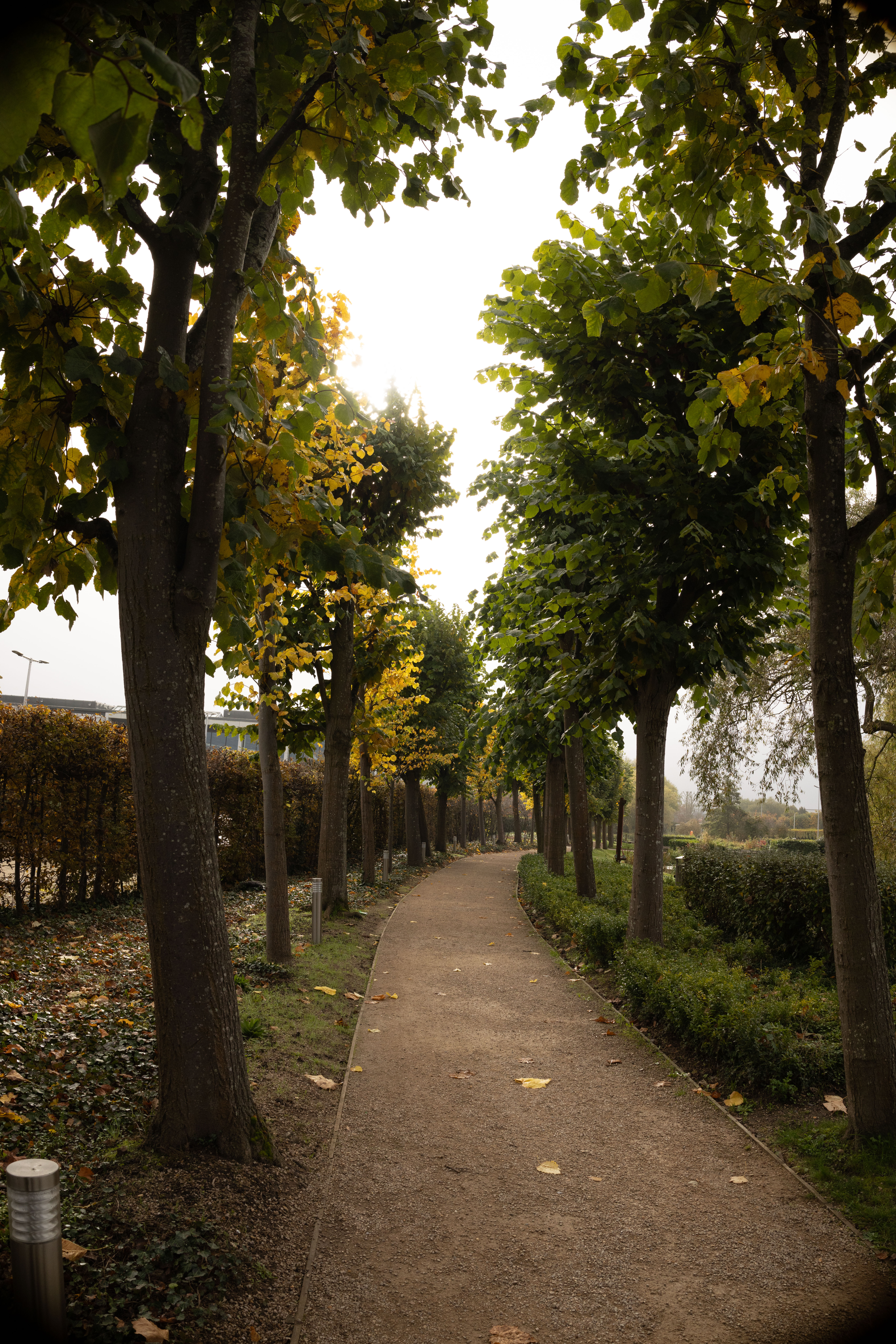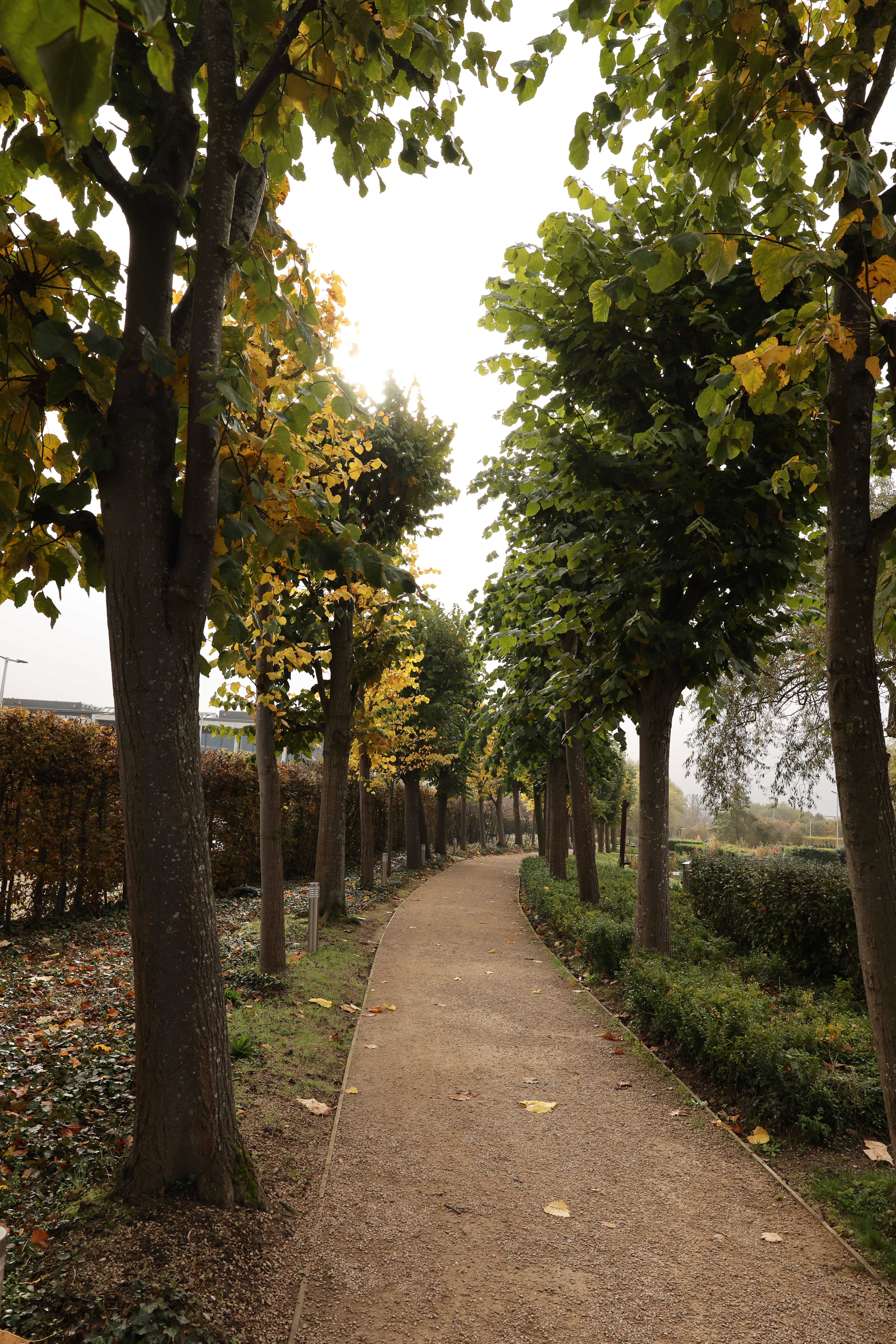Early Verdict
The Canon RF 24mm f/1.4L VCM us brilliantly portable, light, feature-packed and absolutely fantastic for sucking in loads of light in dimly-lit situations. I do find it's a bit more geared towards video than stills photography, which is a shame. I also wish the 24mm was a tad sharper and didn't rely on lens correction profiles – while this may not be a problem for videographers, it could possibly be an issue for those looking to take stills. I must stress that I was only testing a beta sample of the lens, so image quality could still change between now and the launch model.
Pros
- +
Small, light and compact
- +
Weather sealing
- +
Uniform size with other hybrids
- +
Super wide f/1.4 aperture
- +
Fast and quiet autofocus
Cons
- -
Expensive
- -
Limited Iris Ring use for stills
- -
Electronic focus and Iris Rings
Why you can trust Digital Camera World
The Canon RF 24mm f/1.4L VCM is one of the company's new hybrid lenses: elite L-series optics aimed at both stills photographers and filmmakers in equal measure, with the inclusion of fast and quiet autofocus motors and an Iris (aperture) ring to adjust the aperture smoothly on the fly.
A lens with a 24mm focal length is an obvious choice for hybrid primes, offering a wide-angle lens that will appeal to photographers who shoot things like landscapes and astrophotography, while also offering a workhorse for videographers who rely on wider focal lengths for a huge swathe of their work.
The super-wide f/1.4 aperture make it quite desirable for situations where you need to suck in lots of light, as well as offering creative control for subject separation. I got hands-on with an early beta sample of the Canon RF 24mm f/1.4L VCM, and these are my initial thoughts and findings.
Canon RF 24mm f/1.4L VCM: Specifications
| Mount | Canon RF |
| Autofocus | Yes, Nano USM and VCM |
| Image stabilization | No |
| Aperture range | f/1.4 - f/16 |
| Close focus distance | 24cm |
| Coatings | Air Sphere, Super Spectra and SWC |
| Aperture blades | 11 |
| Filter | 67mm |
| Size (DxL) | 76.5 x 99.3mm |
| Weight | 515g |
Canon RF 24mm f/1.4L VCM: Design & Handling
Canon has clearly put a lot of thought into its trio of hybrid primes, with the new Canon RF 24mm f/1.4L VCM sharing identical proportions of 76.5 x 99.3mm to its siblings (the RF 35mm f/1.4L and RF 50mm f/1.4L).
That is not the only similarity as other features like the Iris ring, 67mm front filter thread ring, maximum f/1.4 aperture and even the price tag (at least in the UK) is shared between the trio.

Sharing an identical build makes them not only neat and easy to pack away and store, it's also very practical for videographers – especially those using gimbals, as the balancing adjustments will be fairly minimal when swapping between the three.
Switching filters by the front 67mm front filter threads is also very easy and cuts costs of buying multiple filter sizes or faffing with step-up and step-down adapter rings when changing lenses.

The internal optics of the three lenses are different, to cater for their specific focal lengths, so unsurprisingly there is a slight weight difference with the 24mm tipping the scales at 515g (while the 35mm weighs 555g and the 50mm is the heaviest at 580g).
The side of the lens barrel is virtually identical to the other hybrid primes, including a large electronic focus ring, AF/MF switch, Custom Function button and a switch to activate the Iris ring and change the aperture.

It also has a metal lens mount and rubber seal for protection against the elements, and inherits Canon's new rear filter design from the 35mm f/1.4L. (This is absent on the new 50mm f/1.4, but it's a more important for wider focal lengths as filters attached to the front thread are more likely to appear in shot and cause vignetting.)
The Iris ring enables users to control the aperture by a physical ring and is calculated in f-stops, which will be more familiar to photographers than the more accurate T-stops used in conventional cinema lenses.

The Iris ring is also electronic, or fly-by-wire, which means it's not a physical aperture ring like you'd find on an old film lens – it only changes the aperture when connected to and powered by a camera body.
The Iris ring works without a hitch in video mode on all EOS R cameras, but currently it only works for stills on the Canon EOS R1 and EOS R5 Mark II bodies – though Canon hopes to expand this to other core camera models in the future.
Canon RF 24mm f/1.4L VCM: Performance

The autofocus on the Canon RF 24mm f/1.4L VCM is super fast and snappy, as indeed it is on all three of the hybrid primes. Manual focus is the electronic fly-by-wire design that Canon has adopted for all of its RF lenses. It uses both a Voice Coil Motor (VCM) and Ultrasonic Motor (USM) to control different lens groups, which means it can be blisteringly fast to find focus.
For most situations I don't mind the fly-by-wire approach, as the autofocus is so fantastic for portraiture, wildlife and landscapes that you rarely require manual focus. However, 24mm is the perfect focal length for street photography – and for this genre specifically, I'd prefer to have a physical focus ring with a focus distance scale (which is preferable if you know your subject is going to be, say, one or two meters in front of you, as you can zone focus to a set distance more easily).
There's a good reason why lenses such as Leica's Summilux-M 24mm f/1.4 Asph uses this more manual, physical focus ring design.

The back of the Canon RF 24mm f/1.4L VCM reveals its high-quality metal lens mount with rubber weather seal around it to keep out moisture, dust and dirt. (All of Canon's elite lenses wearing the L-series red ring are fully weather-sealed.)
On the back you'll also find the rear filter holder if you prefer to mount your filters at the back, though it also has a 67mm front filter thread.

Internally the lens is constructed from 15 elements in 11 groups, and includes a pair of Ultra-low Dispersion (UD) elements as well as an Aspherical (ASP) element. It also boasts the same Air Sphere and Super Spectra coatings as the new 50mm f/1.4L to combat flare and ghosting, and ASC coatings also help keep the color balance even.
In addition, the 24mm also gets Canon's Subwavelength (SWC) treatment – important for suppressing reflections, particularly at wider focal lengths. It also boasts an anti-reflective Flourine coating, which makes the front element easy to clean.


Testing the pre-production beta sample I noted quite a big difference between the JPEG and RAW files. While the in-camera Live View and JPEGs produce images with nice straight lines and corrected verticals, the RAW files show some serious signs of vignetting where the imaging circle isn't large enough to cover the corners of the sensor. This means it's absolutely essential to use a lens profile correction when you're editing to correct for this.
It's not my favorite method, as pushing and pulling pixels around shouldn't be relied upon to create a decent image, though it's the same tactic employed by the Canon RF 10-20mm f/4L IS STM – and its image quality was sharper than its predecessor, so perhaps there's a method to the madness.


During testing I was impressed with how the 24mm f/1.4L dealt with other optical defects, such as chromatic aberration and ghosting, and these were essentially not a problem. While I was treated to a typically overcast British day when shooting, I didn't get a chance to shoot into direct sunlight to see how the lens coped with flare – though the image below, supplied by Canon, should give you an indication.
I was a little disappointed with the overall sharpness of the lens, not only when shooting wide open but even when stopped down to middle values like f/8, as it's not the most razor-sharp lens I've ever used – and is perhaps shown up a little by the 45MP sensor of the R5 Mark II. Though in fairness, I had just finished my hands-on session with the Canon RF 70-200mm f/2.8L IS USM Z – which is sharp enough to shave with!


Also in the press materials supplied by Canon was this image below, revealing what we think could be an optical defect known as 'onion ring bokeh'. This is where concentric circles (like onion rings) can appear within the out-of-focus highlights.
Some people like this effect, while others loathe it. Shooting in the daytime I couldn't replicate the flaw in my test shots, though it is something we'll look at closer with our more thorough lab tests in the coming weeks and months.

One feature I did have a lot of fun with, though, was the closest focusing distance of just 24cm. Shooting close-up to subjects like this autumn leaf and blowing the aperture wide open to f/1.4 is a brilliant way to put a new spin on landscapes and draw attention to your focal point with a creamy, shallow depth of field.

Canon RF 24mm F1.4L VCM: Verdict
So should you buy Canon's latest RF 24mm f/1.4L VCM hybrid lens? While there are similar lenses from a photographic perspective, there is nothing else like it when it comes to video.
If you're pining for native a 24mm, the only other option is the RF 24mm f/1.8 Macro – which doesn't match the build or image quality, though is more budget-friendly You could also go down the road of using an adapter to mount an EF lens such as the Sigma 24mm f/1.4 DG HSM, which at over a grand less is considerably more affordable – though you won't have the video features and you'll lose out on the benefits of the consistent shape, size and weight of Canon's three hybrid primes.
I've enjoyed my time testing all three of the primes and I think they'll be an incredible asset whether you have one, two or all three. They're brilliantly portable, light, feature-packed and absolutely fantastic for sucking in loads of light in dimly-lit situations.
I do find they're a bit more geared towards video than stills photography, which is a shame. This is evident from the Iris ring only working for stills with the EOS R1 and R5 Mark II, and their similar shape and weight is predominantly for those looking to swap lenses on a gimbal easily.
I also wish the 24mm was a tad sharper and didn't rely on lens correction profiles to – again not a problem for videographers, but possibly an issue for those looking to take stills. I must stress that I was only testing a beta sample of the lens, so image quality could still change between now and the launch model.
Should you buy the Canon RF 24mm F1.4L VCM?
✅ Buy it...
- You need a high quality 24mm lens for Canon RF mount with a wide f/1.4 aperture
- You like to shoot a mixture of photo stills as well as video
🚫 Don't buy it...
- You're on a super strict budget the Canon RF 24mm F1.8 Macro IS STM is much more affordable
- If you don't mind using the Canon EF-EOS R mount adapter the Sigma 24mm f/1.4 DG HSM is a good alternative
Alternatives
Canon RF 24mm f/1.8 Macro IS STM – This pocket-sized and wallet-friendly prime lacks the hybrid video features and weather sealing, but offers image stabilization and light macro capabilities.
Canon RF 24-70mm f/2.8L IS USM – Canon’s most important RF mount trinity lens is here to prosthelytize the benefits of the EOS R system – it’s sharp, it’s stabilized and it even suppresses focus breathing, but it's also a way more expensive proposition.

Deputy Editor on PhotoPlus: The Canon Magazine, Dan also brings his technical wizardry and editing skills to Digital Camera World. He has been writing about all aspects of photography for over 10 years, having previously served as technical writer and technical editor for Practical Photography magazine, as well as Photoshop editor on Digital Photo.
Dan is an Adobe-certified Photoshop guru, making him officially a beast at post-processing – so he’s the perfect person to share tips and tricks both in-camera and in post. Able to shoot all genres, Dan provides news, techniques and tutorials on everything from portraits and landscapes to macro and wildlife, helping photographers get the most out of their cameras, lenses, filters, lighting, tripods, and, of course, editing software.



